1. Vatnsdalshólar and Vatnsdalsá river

The brilliant Vatnsdalsá river is internationally known among anglers for the massive salmon that runs up the river. There is a strict catch and release rule in force in Vatnsdalsá river – the catch must be released after being caught.
Nearby one will find the unusual Vatnsdalshólar, a cluster of hills of all shapes and sizes. The hills are thought to have formed following a massive landslide.
This is also the site of the last execution in Iceland which took place in January 1830 when Agnes Magnúsdóttir, a farmhand, and Friðrik Sigurðsson, a farmer's son from Katadalur, were executed for murder. The events inspired the book Burial Rites by Australian writer Hannah Kent.
Where: South of Blönduós
See: visitnorthiceland.is
2. Glaumbær farm

The turf farm at Glaumbær, also called Skagafjörður Heritage Museum, served was a family home until 1947. The museum focuses on rural life during the 18th century. Next door to the farm, in a house dating back to the 19th century is a small café serving traditional fare.
Where: Skagafjörður
See: glaumbaer.is
3. Seal Centre in Hvammstangi

The Icelandic Seal Centre is both an informative exhibition about seals found off the coast of Icelandand a research centre. Guests can learn all about theses adorable creatures at the centre and maybe even spot some off the coast.
A newly opened restaurant, Sjávarborg, is located on the floor above the centre. The eatery boasts a stunning view over Hvammstangi bay and the surrounding area.
Where: Hvammstangi
See: selasetur.is
4. Hvítserkur rock

Hvítserkur is a 15 metre (49 feet) basalt rock located off the shore of Vatnsnes peninsula. To some, the rock resembles a dragon dropping its head in order to have a sip of water. The rock‘s base has been reinforced with concrete in order to protect its foundations from erosion.
Where: 60 km west of Blönduós
5. Kolugljúfur canyon and waterfall

Kolugljúfur canyon is an imposing sight. It’s located in Víðidalur valley and the wonderful Víðidalsá river runs through it. Some rapids and waterfalls are found in Kolugljúfur, named Kolufossar after the troll woman Kola.
Where: Hvammstangi
See: northwest.is
6. Drangey island

Drangey, a 200 metre (656 ft) tuff mesa, is located in the middle of Skagafjörður fjord. The island, once the main food source for the people of Skagafjörður, is only accessible from one spot, known as Uppganga, or ‘the way up’.
The island was also home to Viking figure Grettir the Strong Ásmundarson and his brother, Illugi. The two men lived on the island for three years after having been outlawed. A number of popular tales are linked to the island.
Where: Skagafjörður fjord
See: en.wikipedia.org/wiki/Drangey
7. Grettislaug geothermal pool

This small, stone-built hot tub is located in North Iceland and is named after the 11th-century warrior, Grettir “the Strong” Ásmundarson, who is known as the country’s longest-surviving outlaw. The temperatures in Grettislaug are usually around 39° Celsius (102° Fahrenheit), but can vary depending on the season and the weather. Changing facilities and showers were recently built near the pool.
Where: South of Reykhólar
8. Þingeyrarkirkja church

Member of Parliament Ásgeir Einarsson (1809-1885) funded and oversaw the construction of the beautiful Þingeyrarkirkja church, a project that lasted 13 years. The stones used for construction were hauled over ice and snow on sleds from Nesbjörg, located further west to Þingeyrar.
Where: Austur-Húnavatnssýsla
Northwest Iceland is sometimes passed by by those travelling north – but there are plenty of reasons for you to stop and explore the area. Here are a few.
1. Vatnsdalshólar and Vatnsdalsá river
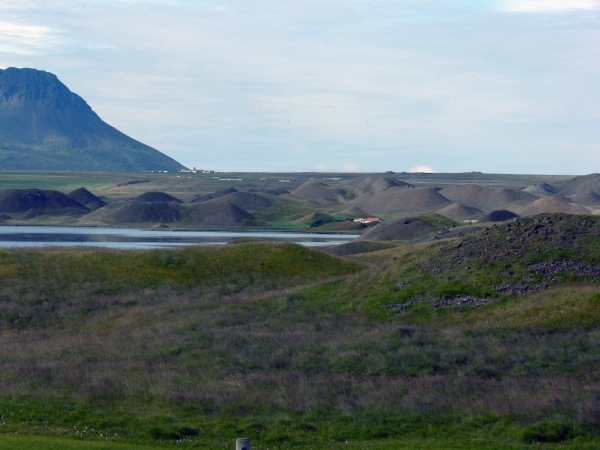
The brilliant Vatnsdalsá river is internationally known among anglers for the massive salmon that runs up the river. There is a strict catch and release rule in force in Vatnsdalsá river – the catch must be released after being caught.
Nearby one will find the unusual Vatnsdalshólar, a cluster of hills of all shapes and sizes. The hills are thought to have formed following a massive landslide.
This is also the site of the last execution in Iceland which took place in January 1830 when Agnes Magnúsdóttir, a farmhand, and Friðrik Sigurðsson, a farmer's son from Katadalur, were executed for murder. The events inspired the book Burial Rites by Australian writer Hannah Kent.
Where: South of Blönduós
See: visitnorthiceland.is
2. Glaumbær farm
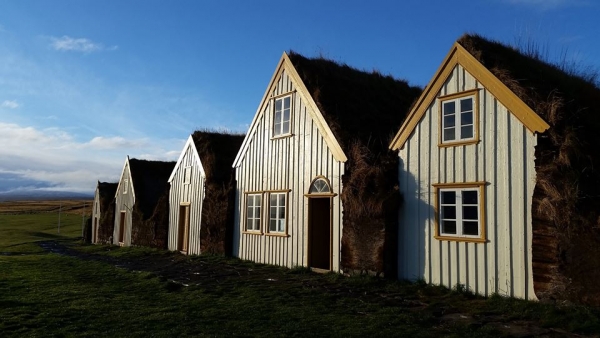
The turf farm at Glaumbær, also called Skagafjörður Heritage Museum, served was a family home until 1947. The museum focuses on rural life during the 18th century. Next door to the farm, in a house dating back to the 19th century is a small café serving traditional fare.
Where: Skagafjörður
See: glaumbaer.is
3. Seal Centre in Hvammstangi
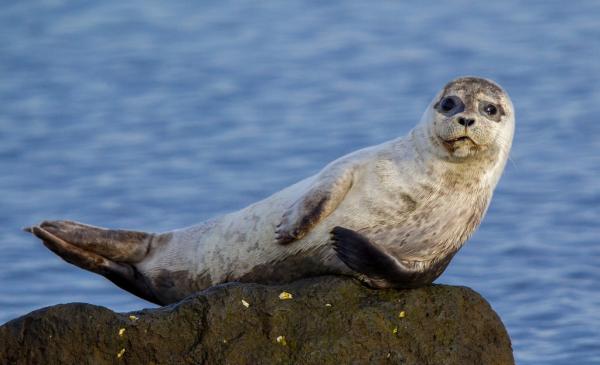
The Icelandic Seal Centre is both an informative exhibition about seals found off the coast of Icelandand a research centre. Guests can learn all about theses adorable creatures at the centre and maybe even spot some off the coast.
A newly opened restaurant, Sjávarborg, is located on the floor above the centre. The eatery boasts a stunning view over Hvammstangi bay and the surrounding area.
Where: Hvammstangi
See: selasetur.is
4. Hvítserkur rock
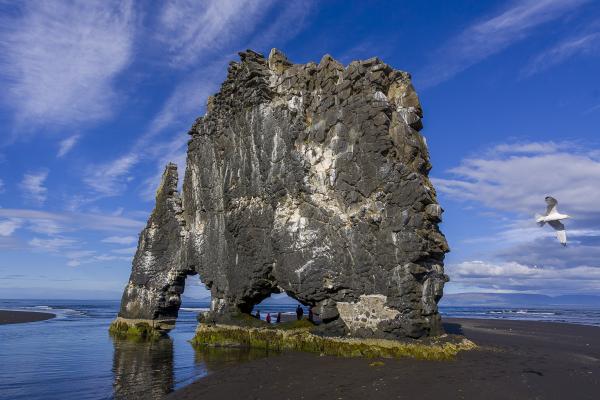
Hvítserkur is a 15 metre (49 feet) basalt rock located off the shore of Vatnsnes peninsula. To some, the rock resembles a dragon dropping its head in order to have a sip of water. The rock‘s base has been reinforced with concrete in order to protect its foundations from erosion.
Where: 60 km west of Blönduós
5. Kolugljúfur canyon and waterfall
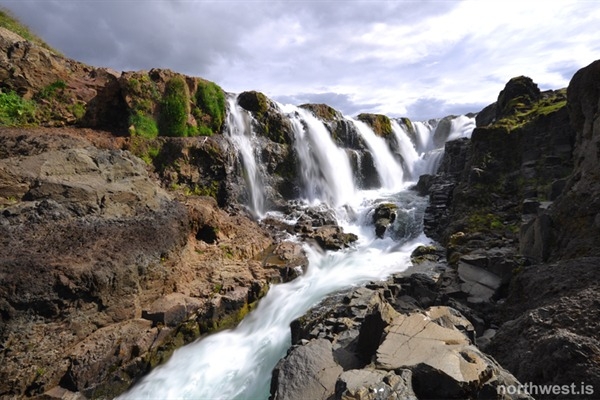
Kolugljúfur canyon is an imposing sight. It’s located in Víðidalur valley and the wonderful Víðidalsá river runs through it. Some rapids and waterfalls are found in Kolugljúfur, named Kolufossar after the troll woman Kola.
Where: Hvammstangi
See: northwest.is
6. Drangey island
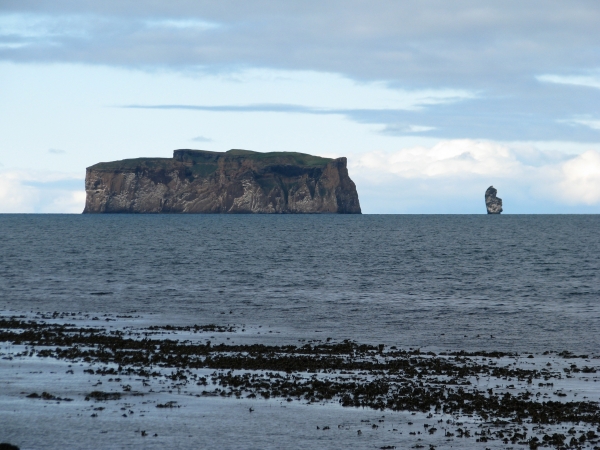
Drangey, a 200 metre (656 ft) tuff mesa, is located in the middle of Skagafjörður fjord. The island, once the main food source for the people of Skagafjörður, is only accessible from one spot, known as Uppganga, or ‘the way up’.
The island was also home to Viking figure Grettir the Strong Ásmundarson and his brother, Illugi. The two men lived on the island for three years after having been outlawed. A number of popular tales are linked to the island.
Where: Skagafjörður fjord
See: en.wikipedia.org/wiki/Drangey
7. Grettislaug geothermal pool
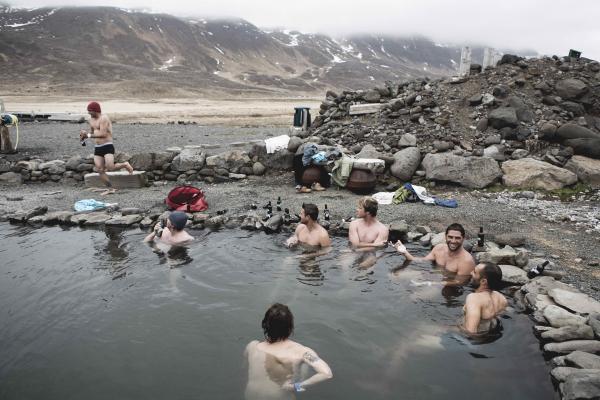
This small, stone-built hot tub is located in North Iceland and is named after the 11th-century warrior, Grettir “the Strong” Ásmundarson, who is known as the country’s longest-surviving outlaw. The temperatures in Grettislaug are usually around 39° Celsius (102° Fahrenheit), but can vary depending on the season and the weather. Changing facilities and showers were recently built near the pool.
Where: South of Reykhólar
8. Þingeyrarkirkja church
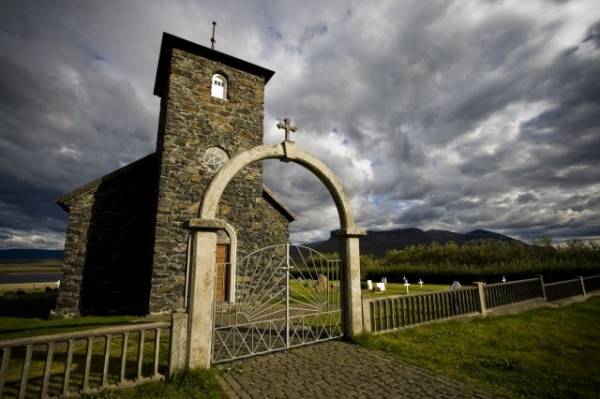
Member of Parliament Ásgeir Einarsson (1809-1885) funded and oversaw the construction of the beautiful Þingeyrarkirkja church, a project that lasted 13 years. The stones used for construction were hauled over ice and snow on sleds from Nesbjörg, located further west to Þingeyrar.
Where: Austur-Húnavatnssýsla






